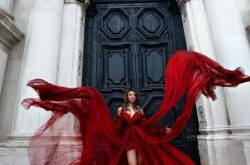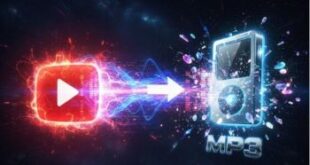In this age of hyper-speed digital evolution, the boundaries between technology, art, and human creativity are breaking down in ways a decade ago we could only vaguely anticipate. What began as a cautious, gradual move toward automation has turned into an outright revolution in creative industries—from storytelling and design to film and music.
The new renaissance is not just about technological advancement; it’s about reimaging the tools of creativity and redefining what it is to be an artist in the 21st century. Artificial intelligence, machine learning, and immersive technologies like AR/VR are maturing and, in doing so, are speeding up new paradigms of interaction and creativity.
The Democratization of Creative Tools
Perhaps the most important shift in recent years has been the democratization of creative tools. While content creation of high quality was once the preserve of professionals who had access to expensive equipment and training, today’s platforms offer up easy, low-barrier ways of making art, music, video, and design. Mobile apps enable anyone to become a digital illustrator, video editor, or even a 3D animator.
This democratization has opened participation, and the world’s creative pool is richer for it. Indian village artists can now showcase their art alongside New York or Tokyo artists. TikTok, YouTube, and Instagram now are no longer just entertainment websites—they are powerful discovery and influence channels.
The Role of Artificial Intelligence in Today’s Creativity
One of the most intriguing elements of this transition is how AI is transforming the meaning of “create.” Beyond simply automating routine tasks, AI is now engaging in the creative process itself.
AI music, for example, is a rapidly growing area in which algorithms compose melodies, generate full-track compositions, and even create human-sounding vocals. AI music is being used in video games, films, advertisements, and now even in popular pop and electronic music. Programs like Amper Music, Aiva, and OpenAI’s MuseNet are allowing artists to collaborate with algorithms as if they were human partners.
But AI music is not just a technical trick—it forces us to think deeply about authorship and emotional authenticity. Can a machine understand the nuances of human experience? Can it create something that truly moves us? While some purists argue that AI music doesn’t have the “soul” of a human artist, others see it as a revolutionary tool that enhances human creativity rather than replacing it.
Further, AI is also being utilized to save cultural heritage by re-creating the rhythms and sounds of endangered music genres, translating them into a form accessible to younger generations and remixing them. Technology, in this way, comes out as not only a creative partner but also a cultural bridge.
Storytelling in the Age of Immersion
The storytelling environment is also evolving. As immersive technologies like virtual reality (VR) and augmented reality (AR) become prevalent, stories are no longer limited to the page or screen. They can now be lived and experienced.
Imagine walking through an historically accurate virtual recreation of ancient Rome, guided by an AI historian that adapts its narration based on your reaction. Or imagine being an actor in an interactive crime thriller where the story changes based on your decisions. These are not sci-fi concepts—they’re being created by visionary creators around the world today.
AI-generated scripts, real-time character rendering, and immersive worlds are pushing the boundaries of what a story can be. The passive viewer is becoming an active participant, fundamentally changing our relationship with media.
Redefining Education and Skill Development
As such, the definition of “creative skills” is being rewritten. Modern education is moving away from narrow, test-based to project-based and experiential models of learning. Children are now learning to code alongside reading and writing; they are creating robots and digital music in grade school classrooms.
Online learning platforms like Coursera, MasterClass, and Skillshare are making expert-taught specialized courses available so that anyone can learn or upskill from home. AI-driven tutoring websites personalize learning paths, making learning more adaptive and engaging.
Creativity is no longer just artistry anymore—it is problem-solving, adaptability, and being able to collaborate across disciplines.
The Way Forward: Challenges and Opportunities
For all the enthusiasm, there are huge ethical and societal issues with AI’s ascension in creative fields. To whom do you assign rights to an image made by an algorithm? How do you provide for diversity in data sets used to train these models? What becomes of human artists as machines gain proficiency?
There’s no question that certain classic professions will be displaced, but history has taught us that creativity is quintessentially human, infinitely malleable. The artist’s role will evolve, not vanish. Rather, makers will become curators, conductors, and visionaries who utilize these tools to convey something distinctly human.
Lastly, the merging of technology and creativity is not man vs. machine—it’s man with machine. The digital renaissance is here, and it’s our job to shape its legacy with intention, imagination, and integrity
 Newspatrolling.com News cum Content Syndication Portal Online
Newspatrolling.com News cum Content Syndication Portal Online







